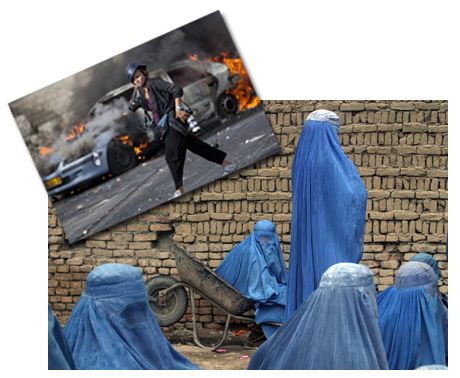
By Pamela Burke/July 24, 2013
Photos Courtesy of Heidi Levine and Sipa Press
We recently ran Part One of our interview with Heidi Levine, describing how she got started in the dangerous field of conflict photojournalism and how she captures her compelling images in the heat of the battle. She had much to say about dealing with the demands of being a working mother of three as well as her approach to the pressures of her profession, so we decided we had to do a Part Two.
“It is not easy to juggle the roles and demands of being a photographer and a mother no matter how old your children are or for a father either. We are both equally at risk.” Heidi Levine
Here she talks to us about how she manages the challenges of her high stress job and her role as a mom in this most volatile part of the world and what image she’d choose as her most memorable…
EYE: What have been some of the toughest assignments for you? Do any of your more difficult shoots give you pause to rethink working in these dangerous areas?
HEIDI: Libya was very difficult and Syria was the most dangerous of all, yet the Gaza wars, suicide bombings and military operations were the most difficult for me of all. It was and still is extremely challenging because I am so connected to both sides of the conflict. There was no real front line, not for the suicide bombings.
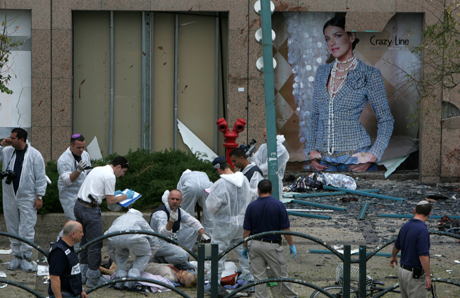
Let’s just say, I ordered my coffee to go for a very good reason! Unfortunately, I have attended the funerals of family members of my own colleagues and friends who were killed in the conflict, and this fuels me to continue because it has become so personal. I weave in and out of both worlds and that has given me the opportunity to cover both sides.
EYE: You have three children. I’m sure people ask you why choose this particular profession. What do you tell them and what do you tell your children?
HEIDI: I think it took a long time for my children to really appreciate and understand the work I do, but I am confident today that they feel very proud of me. I know that it is difficult for them and for my whole family to know that I am in dangerous situations.
First of all, they are scared to lose their mother. In many ways, they felt that I was taken away from them by the conflicts I covered, especially the Palestinian-Israeli.
I have a framed photograph of myself being punched by a Jewish settler in Hebron who tried to prevent me from photographing an Israeli soldier who had been wounded. When my daughter would have friends visiting, she would turn the photograph around so they would not see it. She used to ask me why I could not be a normal mother and be a schoolteacher.
This year, she wrote her first college essay for her English course about me and titled it, My Mom, The War Photographer. I have to admit that I really cried when she told me she was writing about me. It made me understand she not only understood what I do but was actually proud of it and wanted to share it.
“My children grew up knowing conflict in their own backyard so it was always very difficult for me to hide it from them.”
They would watch the news as many kids do in the Middle East and see me even at times on television. When I went to Libya, I tried to hide it from one daughter and even kept it off any of my Facebook posts until I returned safely home. She knew the truth.
I think Syria was the worst conflict for everyone in my family to deal with. My son actually gave me an ultimatum. He told me I have only two weeks and not a day longer or he would disown me as his mother. His friends told me how scared he was when I was away in Libya, and I respected that even though I felt torn inside and had wished to stay on longer. I returned to my own son’s deadline over mine.
I believe that with any profession, as a parent, you have to make compromises. At times, I cannot be the best photographer that I wish to be. I know I have disappointed my children, family and even friends, and then there is the ‘me’ in this equation as well.
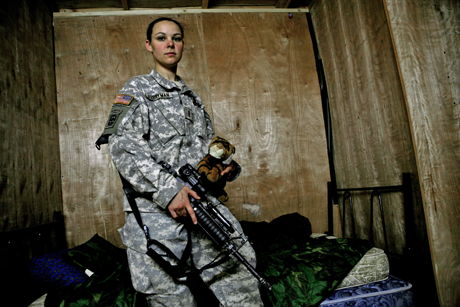
EYE: You were embedded with female U. S. troops in Iraq in 2008 for a month. How would you describe that shoot?
HEIDI: My embed with both male and female American troops was an incredible experience. It taught me so much about the people in the military from my own country which I never would have learned without being embedded. It is different when you spend day and night with the people your are documenting.
I also grew up hearing so many false things about the military and how it only attracted the uneducated or those without any other opportunities. That is not true at all. I met incredible people. I did become very close with the women during my embed. Many had children of their own back home so we shared this common feeling of guilt for being away from home with this added element of being in a war zone.
We could and did speak about everything–our professional frustrations, our goals, our heartbreaks and even the concern about gaining weight or growing old. Many of the male soldiers in the units I was with googled me and were actually excited to have me around.
At night, they would show me their own photographs and ask me for advice. I grew up in the USA being a bit brainwashed that if you went into the military it was because you could not be successful. I really met amazing intelligent people.
EYE: How difficult is it to be embedded?
HEIDI: I was very traumatized when I returned back home because a very young Russian photographer, Demitri Chebotayev, 29, was killed. He slept on an upper bunk bed when we were both waiting for our embeds in the Green Zone. I had a very difficult time understanding why him and not me. I also soon learned that the group of Iraqi policemen I had photographed was also killed; I really had a difficult emotional time when I returned.
EYE: Your photos capture emotions and experiences seldom seen. What do you look for when choosing your subjects?
HEIDI: First of all, I try to capture moments and emotions that are actually happening, not situations because someone wants to perform for my camera. Today, people are very aware of their image and the power of the media. I do not want people to use the situation to try to manipulate me.
“I also do not want to sugarcoat the harsh realities of wars, conflicts or social injustices.”
It can be tricky at times to judge. I can understand people want to get their message out, have their story heard, and they know that a photographer or other member of the media can do that. It is our goal but we can fall into situations which try to manipulate the facts.
I also do not want to sugarcoat the harsh realities of wars, conflicts or social injustices. I do not censor myself from taking gruesome images because I do not want to fool the world into thinking war is any degree less horrific than it is. I try my best to remain respectful of my subject and their situation.
EYE: Do you intend to continue shooting in these challenging parts of the world?
HEIDI: I will but I have to follow my own instinct. My “Guardian Angel” at times grabs a hold of me and makes me understand it needs a coffee break, a bit of time out. This feeling does not always make sense and sometimes brings me into battle with my own feelings, forcing me to make the decision to stay out of a situation.
My daughter is getting married soon. When I went to Syria she told me that I better not get killed and miss her wedding so I have decided to stay out of Syria until after her wedding for right now. I sort of feel like a china doll mother, fragile, and that I have to try my best to be safe.
“Bullets and bombs do not discriminate between gender. I have been very lucky but some of my friends and colleagues have not.”
I think when I was younger, I felt more invisible and never felt something terribly wrong could ever happen to me. The tragic deaths of people I know such as Chris Hondros, Maria Colvin and others, together with the injuries that Joao Silva and Emillio Morenetti experienced, losing their legs in Afghanistan, really impacted me and all of us, not to mention their families. At the same time, it makes it even more important to continue.
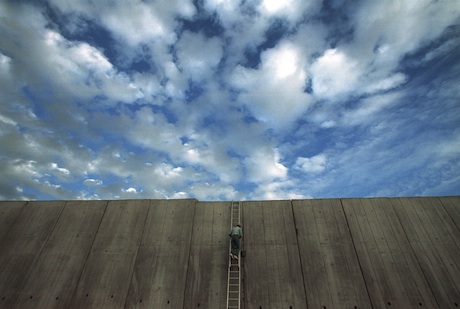
EYE: Since we are The Women’s Eye, how would you describe your eye? Tell us about one of your favorite photographs or one that is particularly special to you.
HEIDI: I believe that many would say that my photographs somehow show a lot of intimacy even if they are difficult to look at or make someone wish to turn away. I get very emotionally connected to my subjects, maybe some would say that is not good. It does bring me a lot of emotional chaos, but I am human and not a machine.
I cannot fool myself or try to capture my images any other way. This is who I am. I never forget that it is just a matter of circumstances and am reminded too often how grateful I am not to be on the other side of the lens when documenting these circumstances. Tragedy knows no boundary.
For over a week I have tried to ask myself which one image was the most important one I have taken, but I am still trying to answer this question, not only for the purpose of this interview, but also for myself. It is an emotional process and also painful.
“I do not want to claim more importance to the scenes I have witnessed over another. The loss of life and suffering is an equal tragedy for every individual.”
I believe one of the subjects that heavily impacted me in my career over all these years is the construction of the separation wall here in Israel that separates Israel from the Palestinians living in the West Bank. Although I have photographed the scenes of Palestinian suicide bombings and the Israeli military operations in response, to me, it represents a loss of hope, and I fear it will only continue to breed hatred between the two people.
I suppose because I have lived here so long and my memories of Israelis shopping in Palestinian towns and cities are so much a part of my experience, my memory makes it very painful to see this 8 meter high cement wall or electrified fences now in place.
I do not always have to capture images showing blood or fighting to impact my audience. Another image I feel strongly about is actually very simple, and I believe it delivers a universal message, a plea to stop the suffering. It is a photograph of a young Palestinian girl crying against a wall at the beginning of the last war in Gaza during the funeral of a relative.
I just feel her expression and the way she appears to be pleading or praying delivers a message that does not needs words or explanations or even translations into another language for it to be understood any where in the world. For me, this is one example that demonstrates what the power of photography is all about.
EYE: It is indeed a powerful and poignant photograph. Thank you, Heidi, for sharing your work. We wish you the best of luck and safety in your future travels.
###
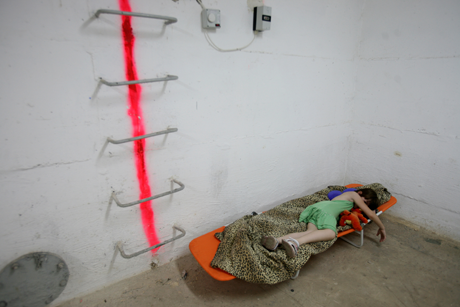
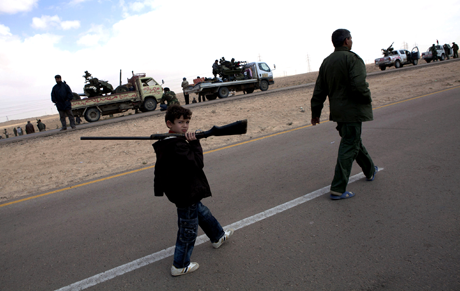

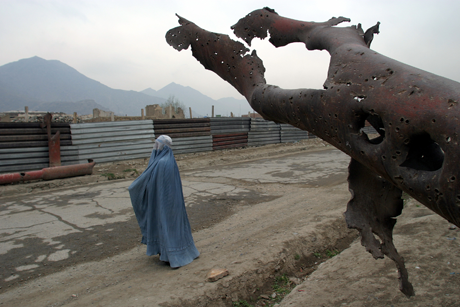
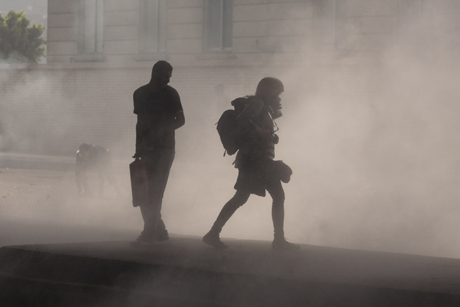
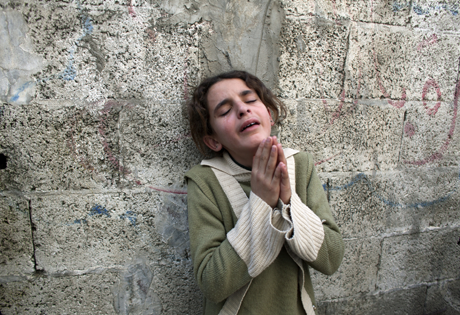
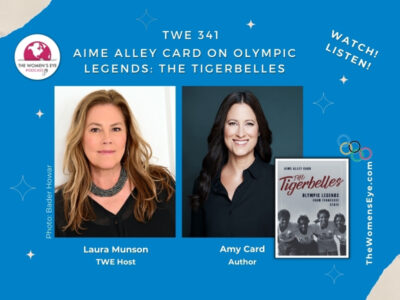

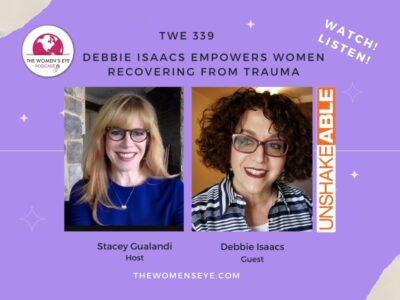
Leave a Reply